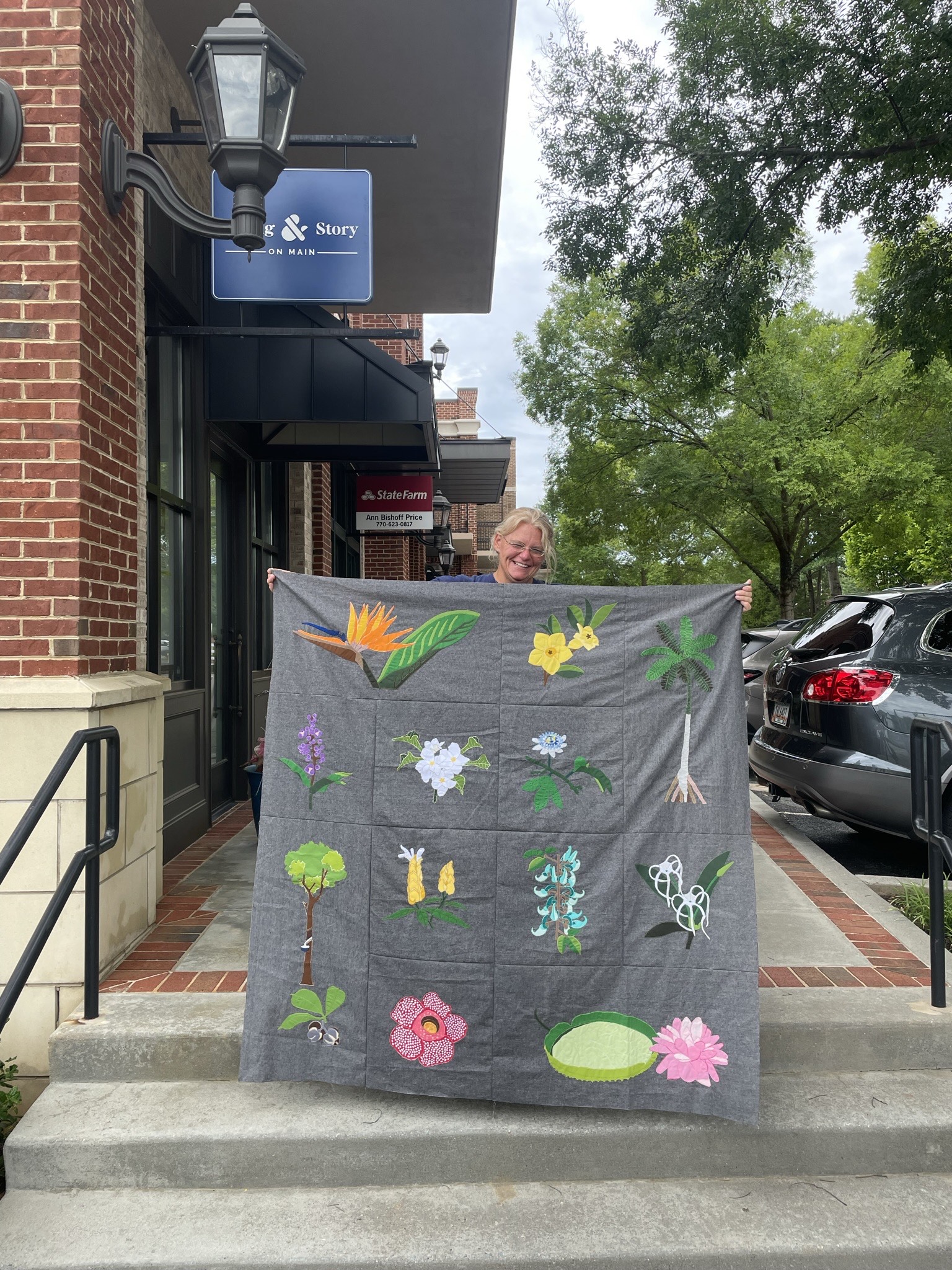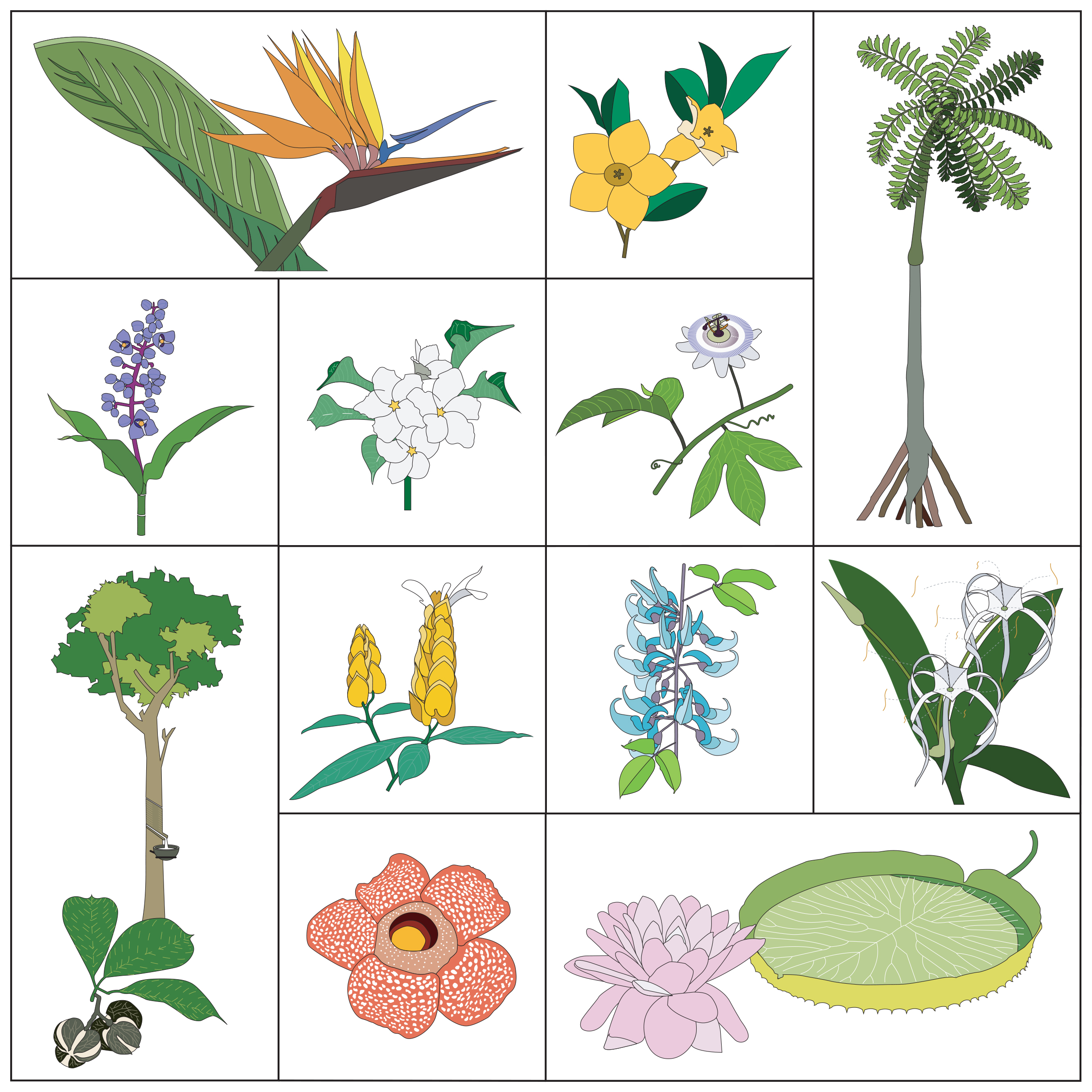QA Birthday Block of the Month: Introduction
Happy birthday to us! Here at the Quilt Alliance, we love birthdays. And what better way to celebrate our own 30th anniversary than with a huge quilt party? The best part is — you’re invited! And so are nine of your very favorite quilt designers who each designed a block for our first-ever block of the month quilt as a birthday gift to the Quilt Alliance. What is the Quilt Alliance Block of the Month? For the rest of our anniversary year, all Quilt Alliance members at any level or donors who have contributed $30 or more will receive a new block pattern each month. You’ll get a reminder of when each block is released in our member newsletter so you’ll never have to worry about missing one. At the end of our Block of the Month celebration, you’ll have nine fun blocks. Put them together with sashing and you’ll have a cozy 52” square lap quilt! Each of the blocks, designed specifically for the Quilt Alliance’s Block of the Month, is inspired by some aspect of the designer’s quilt story, and we’ll provide guidance and tips as you work through the blocks for documenting and reflecting on YOUR quilt story! Who Are the Block of the Month Designers? Here is the schedule for our 30th anniversary Block of the Month! April: Ricky Tims May: Zak Foster June: Pat Sloan July: Sheri Cifaldi-Morrill August: Suzy Williams September: Andrea Tsang Jackson October: Bonnie Hunter November: Carol Lyles Shaw December: Georgia Bonesteel No doubt that if you’re a quilter, you recognize some of those names! We are so fortunate to have so many influential and talented designers participating in our Birthday Block of the Month. We can’t wait to share their stories with you through Go Tell It Videos as we quilt together! Getting Started with Your Own Birthday Block of the Month Like any fun block of the month, your first step for ours is picking your fabrics! You can either choose your own fabrics or use the same fabrics we are using for the cover version of the quilt. If you’re an adventurous quilter, you can even consider using scraps! The fabrics used for the cover version of our Birthday Block of the Month are Art Gallery Fabrics PURE Solids in the following colors: Evergreen Swimming Pool Creme de la Creme Sweet Fig Cabernet For our backing fabric, we added a beautiful Ruby Star Society print for a pop of excitement on the back! The print is from the Darlings 2 fabric line and is called Wildflowers in black. It complements the neutral Creme de la Creme so nicely! The Quilt Alliance Birthday Block of the Month uses 5 colors. Feel free to choose your own fabrics, but if you’d like tips, we have examples of 7 color palettes that can help inspire you! Here is the color palette we are using to make our quilt: Here is the easy three-step formula we used to come up with this color palette, which you can use to create your own! Choose two colors or color families. Ours are deep green/blue and red/purple. Pick one dark and one light color from each. Choose a neutral color that will be used in both the blocks and the sashing. It’s that easy! This simple light and dark formula will help ensure that your quilt has enough color contrast while keeping the look cohesive and fresh. Let’s break that formula down using our cover quilt colors before diving into other color palette examples. Evergreen — dark green/blue Swimming Pool — light green/blue Creme de la Creme — neutral Sweet Fig — light red/purple Cabernet — dark red/purple Here’s an example that uses the same formula. We have a dark yellow, light yellow, neutral, light blue, and dark blue. This rose garden-inspired palette uses the same light and dark formula, but instead of a traditional neutral like white or cream, we’ve used a soft pink to connect the greens and reds. This palette uses the same formula, but like the rose garden palette, these tropical sunset colors are connected with a soft color from the same family. We have a dark and light orange, dark and light pink, and a peach that connects all the colors. You can build on the light and dark formula to make a monochromatic palette! On the left, you can see that we have a dark and light blue. On the right, we also have a dark and light blue. The connecting neutral that will appear in both the blocks and sashing is the lightest color blue, creating a cool-themed monochromatic palette! Here’s a warm monochromatic color palette that was made the same way as the cool palette above. We have a dark and light yellow, a dark and light pink, and a peach neutral that connects them all! If you like vibrant colors, you can even consider using black as your neutral color! It helps bright colors jump off a quilt and glow almost like neon. Just like the palettes above, this one is made using the same formula — dark and light green, dark and light purple, and black as the neutral. There are so many ways to choose your own fabrics, but using our dark and light formula will help make sure that you have enough contrast in your colors as you make blocks each month!



